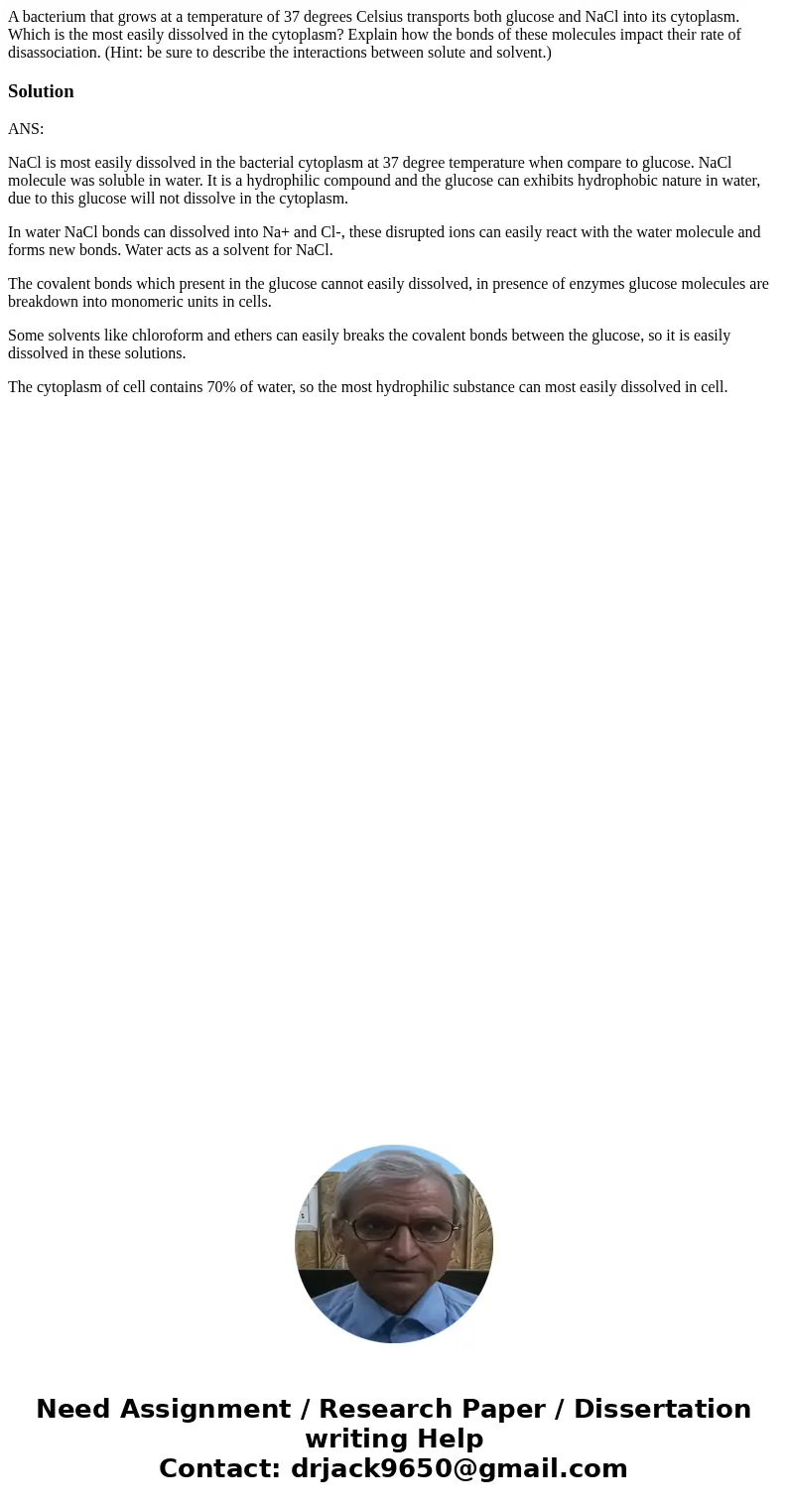A bacterium that grows at a temperature of 37 degrees Celsiu
A bacterium that grows at a temperature of 37 degrees Celsius transports both glucose and NaCl into its cytoplasm. Which is the most easily dissolved in the cytoplasm? Explain how the bonds of these molecules impact their rate of disassociation. (Hint: be sure to describe the interactions between solute and solvent.)
Solution
ANS:
NaCl is most easily dissolved in the bacterial cytoplasm at 37 degree temperature when compare to glucose. NaCl molecule was soluble in water. It is a hydrophilic compound and the glucose can exhibits hydrophobic nature in water, due to this glucose will not dissolve in the cytoplasm.
In water NaCl bonds can dissolved into Na+ and Cl-, these disrupted ions can easily react with the water molecule and forms new bonds. Water acts as a solvent for NaCl.
The covalent bonds which present in the glucose cannot easily dissolved, in presence of enzymes glucose molecules are breakdown into monomeric units in cells.
Some solvents like chloroform and ethers can easily breaks the covalent bonds between the glucose, so it is easily dissolved in these solutions.
The cytoplasm of cell contains 70% of water, so the most hydrophilic substance can most easily dissolved in cell.

 Homework Sourse
Homework Sourse